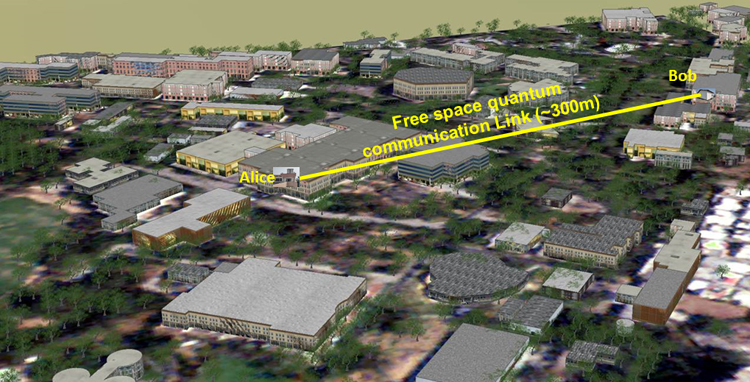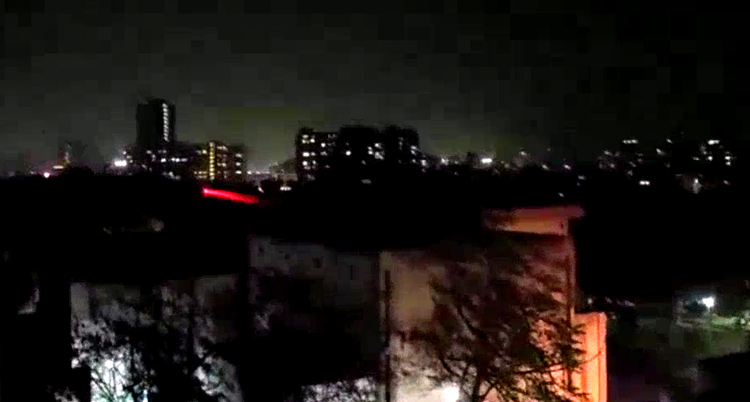INDIAN ARMED FORCES CHIEFS ON OUR RELENTLESS AND FOCUSED PUBLISHING EFFORTS

The insightful articles, inspiring narrations and analytical perspectives presented by the Editorial Team, establish an alluring connect with the reader. My compliments and best wishes to SP Guide Publications.

"Over the past 60 years, the growth of SP Guide Publications has mirrored the rising stature of Indian Navy. Its well-researched and informative magazines on Defence and Aerospace sector have served to shape an educated opinion of our military personnel, policy makers and the public alike. I wish SP's Publication team continued success, fair winds and following seas in all future endeavour!"

Since, its inception in 1964, SP Guide Publications has consistently demonstrated commitment to high-quality journalism in the aerospace and defence sectors, earning a well-deserved reputation as Asia's largest media house in this domain. I wish SP Guide Publications continued success in its pursuit of excellence.
Quantum Communications
Quantum technology is evolving quickly and no doubt will have a significant impact not only on warfare but also in terms of national security. However, experts are still not certain what exactly this impact will be!
 |
The Author is Former Director General of Information Systems and A Special Forces Veteran, Indian Army |

News reports of February 3, 2022 said that scientists of the Ahmedabad-based Physical Research Laboratory (PRL) and Space Applications Centre (SAC) demonstrated hack-proof satellite-based communication. The technology, which uses the concept of “quantum entanglement” will make it impossible to hack any communication in future. The concept is at the core of futuristic quantum computing and also has applications in building unbreakable encryption technology and scientists world over are working on it. The demonstration was conducted at SAC between two buildings 300 metres apart. During the demo, scientists indigenously created an atmospheric channel on the ground to share quantum-secure text, images and videos between the two points. The experiment was repeated over several nights in last week of January 2022 to check the robustness of the system.
ISRO Chief S. Somnath, PRL Director Anil Bhardawaj and SAC (Ahmedabad) Director Nilesh Desai were present to witness the demonstration during which various images were transmitted over a classical channel from one building to another. They were then decrypted at the receiving terminal in real-time. Bill Phillips, winner of Nobel Prize for physics says, “A quantum computer is as different from a classical computer as a classical computer is from an abacus.”
Quantum key distribution (QKD) is a secure communication method which implements a cryptographic protocol involving components of quantum mechanics
Quantum key distribution (QKD) is a secure communication method which implements a cryptographic protocol involving components of quantum mechanics. It enables two parties to produce a shared random secret key known only to them, which can then be used to encrypt and decrypt messages. On December 9, 2020, the Defence Research and Development Organisation (DRDO) successfully demonstrated QKD-based communications between its two labs in Hyderabad to Defence Minister Rajnath Singh. In March 2021, SAC-ISRO also had demonstrated secure video conferencing by using “prepare-and-measure” quantum communication technology, in free space, over a distance of 300 metres.
The concept, as mentioned above, is at the core of futuristic quantum computing and also has applications in building unbreakable encryption technology. In this context, recent news reports indicate that Chinese scientists have created prototype system for decrypting cryptographic systems of any complexity; technology based on new approach to design of quantum computers with proven possibility of creating quantum memory reducing the time for the emergence of quantum systems by orders of magnitude to crack any non-quantum cryptography. At the moment it is the first step but India must take note of this.
China has made giant strides in quantum communications because of its worldwide operation of spying and stealing technology
China has made giant strides in quantum communications because of its worldwide operation of spying and stealing technology. In February 2020, Christopher Wray, Director US FBI had said that China’s theft of technology is biggest law enforcement threat to US and that China’s theft of US trade secrets were costing the United States $300 billion to $600 billion annually. News reports of 2020 also revealed that despite pumping £1 billion in quantum technology since 2013, Britain has handed over these technological advances to China on a platter – through seats of learning. A Portin Down-based secret laboratory of Oxford University (part-funded by the British defence ministry) has been linked to a Chinese Military University. Beijing helped fund the Ultracold Quantum Matter lab through a University controlled by China’s Communist Party (CCP) and the People’s Liberation Army (PLA). For five years, Oxford trained and nurtured a Chinese doctoral student Dongyang Xu.

In 2016, China launched the satellite ‘Micius’, which is solely dedicated to quantum information science. In 2017, the concerned Chinese team, along with a group of researchers in Austria, was able to employ the satellite to perform the world’s first quantum-encrypted virtual teleconference between Beijing and Vienna. However, it was not foolproof because of the discovery that the satellite itself knew the sequences of photons, or keys, for each location, as well as a combined key for decryption. This implied that if a spy had eavesdropped on the satellites activity, the communications could be hacked. This weakness was eventually obviated by not using the satellite as communications relay but allow it to only simultaneously transmit a pair of secret keys to allow two ground stations in China, located more than 1,120 kilometers apart.
The Chinese team next plan to launch and operate a quantum satellite in a higher orbit - 10,000 kilometers above Earth’s surface,which would facilitate quantum communications between ground stations, far apart from one another, throughout the day.
In June 2020, it was reported that Micius satellite successfully established an ultra-secure link between two ground stations separated by more than 1,000 kilometers. A paper published on June 15, 2020 in ‘Nature’ about a secure method of quantum messaging using Micius has brought China closer to realising global communications that would be immune to hacking. The Chinese team next planto launch and operate a quantum satellite in a higher orbit - 10,000 kilometers above Earth’s surface which may take up to another five years. Micius orbits only 500 kilometers above earth but a satellite orbiting at 10,000 kilometers above Earth would facilitate quantum communications between ground stations much farther apart from one another throughout the day.
Quantum technology is evolving quickly and no doubt will have a significant impact not only on warfare but also in terms of national security. However, experts are still not certain what exactly this impact will be since its final shape will emerge only some years from now. Also, the basic properties of quantum mechanics have opened new opportunities for technology, but they also pose some fundamental challenges. As an example, qubits may be equivalent of regular computer bits but they cannot be duplicated or cloned. This means routine programming techniques relying on copying the value of a variable are impossible to use with quantum technology. Denying reading the same qubit twice is big advantage for secure communications but cryptographic keys that cannot be forged can also create difficulties in computing as it complicates the techniques necessary for testing.
India and Japan are also jointly working on launching a quantum communications satellite. In addition to launching quantum satellites, we should also be experimenting with lasers for quantum communications between ground stations
In 2018 NASA had initiated development of the National Space Quantum Laboratory that planned to use lasers on the International Space Station to achieve secure communications between ground stations. In 2021, a joint UK-Singapore project planed to launch a quantum communications satellite. The European ‘Quantum Internet Alliance’ too is working on quantum communications.
The good news is that India and Japan are also jointly working on launching a quantum communications satellite. In addition to launching quantum satellites, we should also be experimenting with lasers for quantum communications between ground stations using lasers, similar to what NASA is doing. Given the right focus and in collaboration with nations like Japan, ISRO should be able to catch up with China in the near or mid future.





